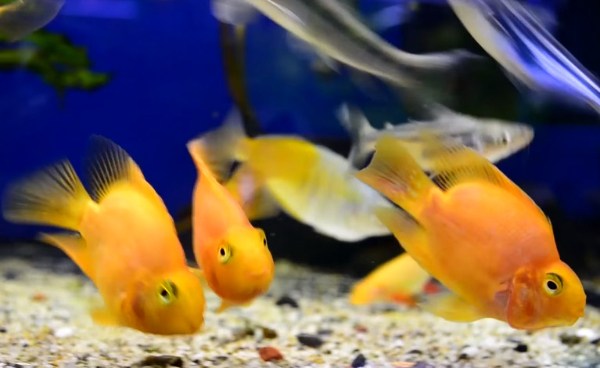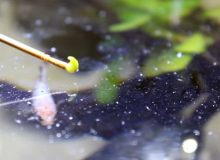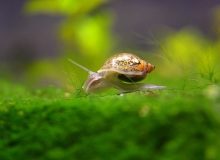The Truth About Nitrate: How Much Is Too Much for Your Fish?
In the quiet world beneath the water’s surface, there’s an invisible threat that slowly poisons life: nitrate. While essential in small amounts, high nitrate levels can silently damage fish health, disrupt breeding, and lead to mysterious deaths in your aquarium. Unlike ammonia or nitrite, nitrate accumulates over time—and by the time you notice something’s wrong, it may be too late. So how much nitrate is truly safe? Why is it harmful in the long run? And most importantly, how can you effectively remove it before it harms your fish? Let’s dive into the answers every aquarist needs to know.
- Effects of Nitrate on Fish
- How much nitrate can fish tolerate?
- Preventing Nitrate in the Aquarium
- Methods for Removing Nitrate in Aquariums
Effects of Nitrate on Fish

Nitrate, while less toxic than ammonia or nitrite, can still have significant impacts on fish health in aquariums when levels become elevated. High nitrate concentrations, typically above 40-50 ppm (parts per million), are known to cause stress in fish, leading to a cascade of physiological issues. This stress weakens the immune system, reduces reproductive success, and, in severe cases, can result in death. The exact mechanisms are not fully understood, but research indicates that nitrate exposure primarily affects blood chemistry, disrupting vital functions.
Specifically, nitrate can reduce the oxygen-carrying capacity of a fish’s blood by altering hemoglobin function, leading to symptoms akin to hypoxia, such as lethargy or gasping. It may also cause organ damage over time, particularly to the liver and kidneys, due to the metabolic burden of processing excess nitrate. Behavioral changes, such as reduced activity or appetite, are often observed, along with increased susceptibility to diseases due to a compromised immune response. These effects are particularly pronounced in sensitive species like certain cichlids or marine fish.
How much nitrate can fish tolerate?
There isn’t really an exact figure although the one thing you can know for sure is that it varies per species. Any given species, whilst it may or may not be hardy, has adapted over many years to its environment and exposing it to anything it wouldn’t normally encounter in its natural habitat could spell disaster.
High pollutant levels are rarely found in naturally occurring waterways such as rivers and lakes. Species such as African Cichlids are used to water in which pollutants are diluted in such a vast quantity of water that they practically cease to exist. This means that adding them to an aquarium rich in nitrate will pose a shock, to say the least. Other species may be more tolerant.
The article Nitrate toxicity to aquatic animals: a review with new data for freshwater invertebrates, written by Julio A. Camargo, Alvaro Alonso, and Annabella Salamanca and published in Chemosphere, concludes that a safe level should fall below 10 mg/l of NO3-N, which is equal to 44.3 ppm on many test kits; the World Health Organization’s standard is 50 ppm. It also states that anything as low as 2 mg/l of NO3-N (just below 9 ppm nitrate) may be required for more sensitive invertebrates.
Whilst this report does suggest a figure, every species is different and the effect nitrate has on aquatic creatures isn’t at all clear. What is evident, however, is the need to keep nitrate levels low.
Preventing Nitrate in the Aquarium
Preventing nitrate buildup in an aquarium is a proactive approach that minimizes the need for intensive removal methods. By addressing the sources of nitrate—such as uneaten food, fish waste, and decaying organic matter—aquarists can maintain a healthier environment for fish and other aquatic life.
Effective prevention strategies focus on reducing the introduction of organic material and managing the tank’s bioload, which directly influences the production of ammonia, nitrite, and ultimately nitrate.
1. Don’t Overfeed

Overfeeding is a primary contributor to nitrate buildup, as uneaten food decomposes into ammonia, which is then converted to nitrite and nitrate through the nitrogen cycle. By carefully observing fish during feeding, aquarists can gauge appropriate portion sizes and use a net to remove any uneaten food within a few minutes, preventing it from breaking down. This practice not only reduces waste but also ensures that fish receive adequate nutrition without polluting the tank.
Incorporating live foods, such as brine shrimp or daphnia, alongside dry foods like flakes or pellets, can further minimize nitrate production. Live foods remain viable in the tank until consumed, unlike flake foods that quickly disintegrate and release nutrients into the water. This approach maintains water quality while providing a varied diet, making it an effective strategy for both freshwater and marine aquariums.
2. Keep Your Tank Clean

Regular tank maintenance is crucial for preventing the accumulation of detritus, which includes fish excrement, uneaten food, and decaying plant matter—all of which contribute to nitrate levels. Routine cleaning, such as vacuuming the substrate with a siphon during water changes, removes organic debris before it decomposes. Battery-operated gravel vacuums offer a convenient alternative for spot-cleaning without removing water, ideal for smaller tanks or nano setups.
A clean tank not only reduces nitrate but also enhances the overall health and aesthetics of the aquarium. Weekly maintenance, including wiping down glass, removing dead plant leaves, and checking filter media, ensures that organic waste is kept to a minimum. This diligence creates a stable environment, reducing stress on fish and preventing the conditions that lead to nitrate spikes.
Don’t Overstock

Overstocking an aquarium with too many or overly large fish increases the bioload, leading to higher waste production and subsequent nitrate accumulation. Each fish contributes to the tank’s organic load through excrement and respiration, with species like herbivorous fish, such as certain cichlids or plecos, producing more waste due to their grazing habits. Selecting fish species and quantities appropriate for the tank’s size and filtration capacity is essential for maintaining low nitrate levels.
In aquascaping, thoughtful stocking enhances both the visual and ecological balance of the tank. For example, a 20-gallon tank might comfortably house 10-15 small fish like tetras, but adding large or high-waste species like goldfish can quickly overwhelm the system. By researching fish compatibility and waste output, aquarists can create a harmonious environment that minimizes nitrate buildup and supports long-term tank health.
Methods for Removing Nitrate in Aquariums
Algae

Algae growth is a common consequence of elevated nitrate and phosphate levels in aquariums, often serving as a visual indicator of water quality issues. While typically viewed as undesirable, algae can help reduce nitrate by absorbing it as a nutrient, particularly in marine setups where macroalgae like Chaetomorpha are used in refugiums. Regular harvesting of this algae removes trapped nitrates from the system, contributing to improved water chemistry.
In aquascaping, incorporating algae like Chaetomorpha in a dedicated refugium can create a natural nitrate sink, especially in saltwater tanks. This method not only helps control nitrate levels but also supports a balanced ecosystem by providing habitat for microorganisms, though it requires monitoring to prevent overgrowth and maintain tank aesthetics.
Plants

Aquatic plants, especially stem plants, are highly effective at reducing nitrate levels by utilizing it as a key nutrient for growth. These fast-growing species, capable of growing over an inch daily under optimal conditions, act as natural filters, absorbing nitrates rapidly when provided with sufficient CO2, high-intensity lighting, and fertilizers. Their lush growth enhances the aquarium’s aesthetic while maintaining water quality.
Water Changes
Water changes are a straightforward and effective method for reducing nitrate by diluting it with fresh, low-nitrate water. Using reverse osmosis (RO) water is recommended, as tap water can contain up to 50 mg/L of nitrate, which may maintain unacceptable levels for sensitive fish. Regular water changes, ideally 20-50% weekly, help maintain nitrate below 25 ppm in freshwater tanks and under 10 ppm in marine setups.
In practice, water changes are most effective when performed consistently with nitrate-free water, ensuring minimal stress to fish. This method not only lowers nitrate but also removes other accumulated waste, supporting a healthier aquarium environment, though it requires careful monitoring of water parameters to avoid shocking tank inhabitants.
Special Filter Media
Specialized filter media, such as Seachem De-nitrate, are designed to reduce nitrate by fostering anaerobic conditions within porous structures, promoting denitrification by anaerobic bacteria. These media, often ceramic or sponge-based, provide surfaces for bacteria to convert nitrate into nitrogen gas. While not as rapid as water changes, they offer a passive, long-term solution for nitrate management when properly maintained.
In aquarium setups, these media are typically placed in low-flow areas of canister filters or sumps to encourage anaerobic bacterial growth. Products like Seachem De-nitrate are praised for their effectiveness in some setups, though results vary, and they require periodic replacement or cleaning to maintain efficacy, making them a complementary tool in nitrate control.
Nitrate Removing Products
 Kolar Labs Metabolix Bio-Pellets #ad
Kolar Labs Metabolix Bio-Pellets #ad
Nitrate-removing products, such as Kolar Labs Metabolix Bio-Pellets or resin-based pouches like API Nitra-Zorb #ad, aim to reduce nitrate through chemical absorption or by supporting denitrifying bacteria. Bio-pellets, for instance, provide a carbon source to fuel anaerobic bacteria in reactors, converting nitrate into nitrogen gas. User experiences are mixed, with some reporting success while others find limited impact, and these products often require regular maintenance or recharging.
These products are typically used in specialized reactors or filter media compartments, offering a high-tech approach to nitrate control. While some aquarists prefer natural methods like plants or water changes, products like bio-pellets can be effective in heavily stocked tanks when used correctly, though they may not fully replace traditional methods and require careful integration into the filtration system.

 Seachem Denitrate 1 Liter #ad
Seachem Denitrate 1 Liter #ad





Leave a Reply